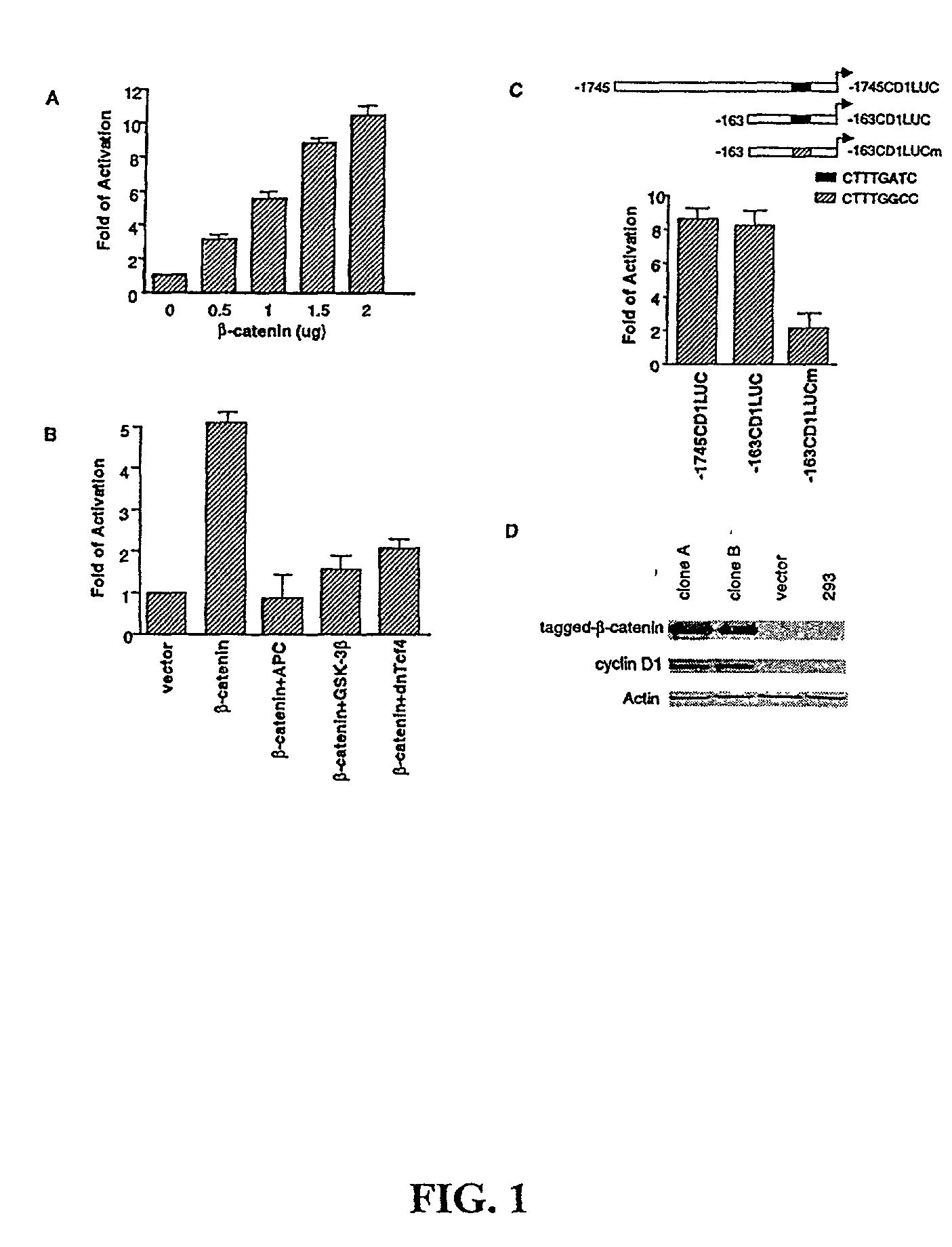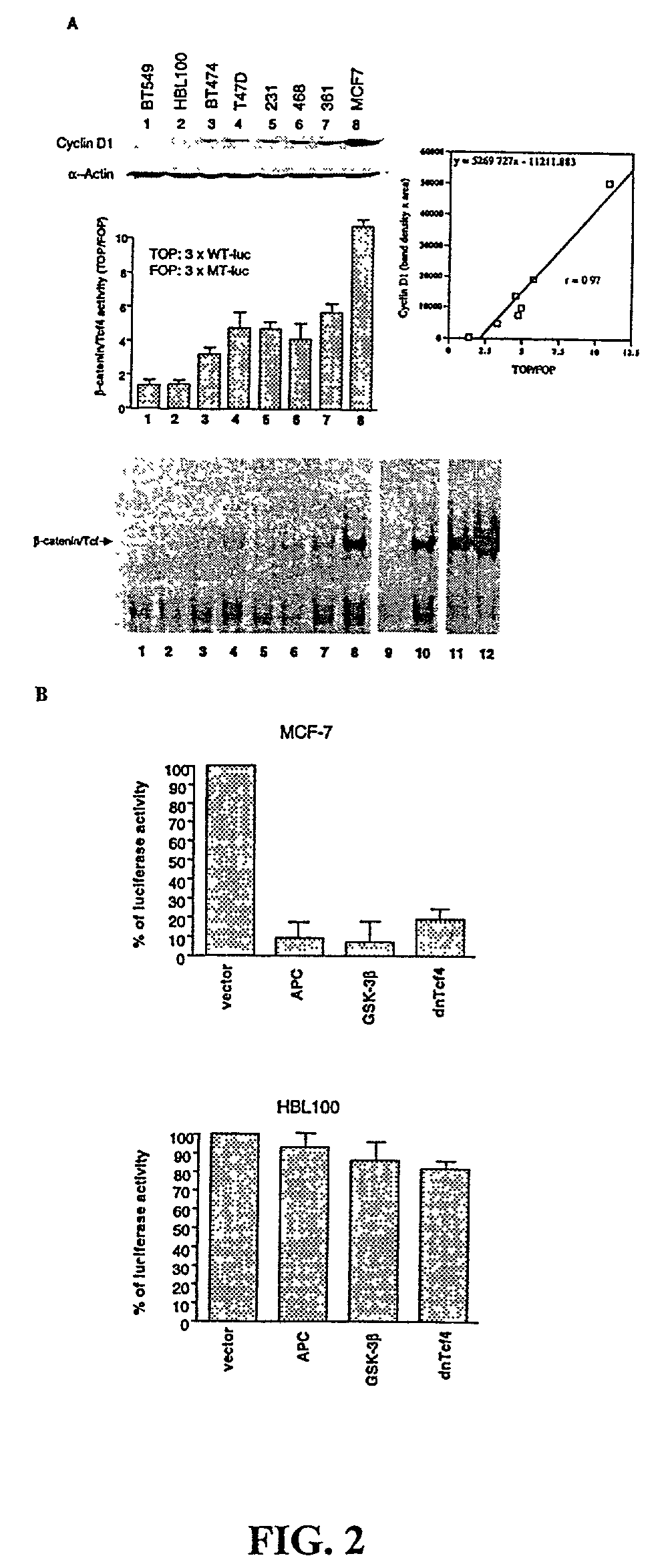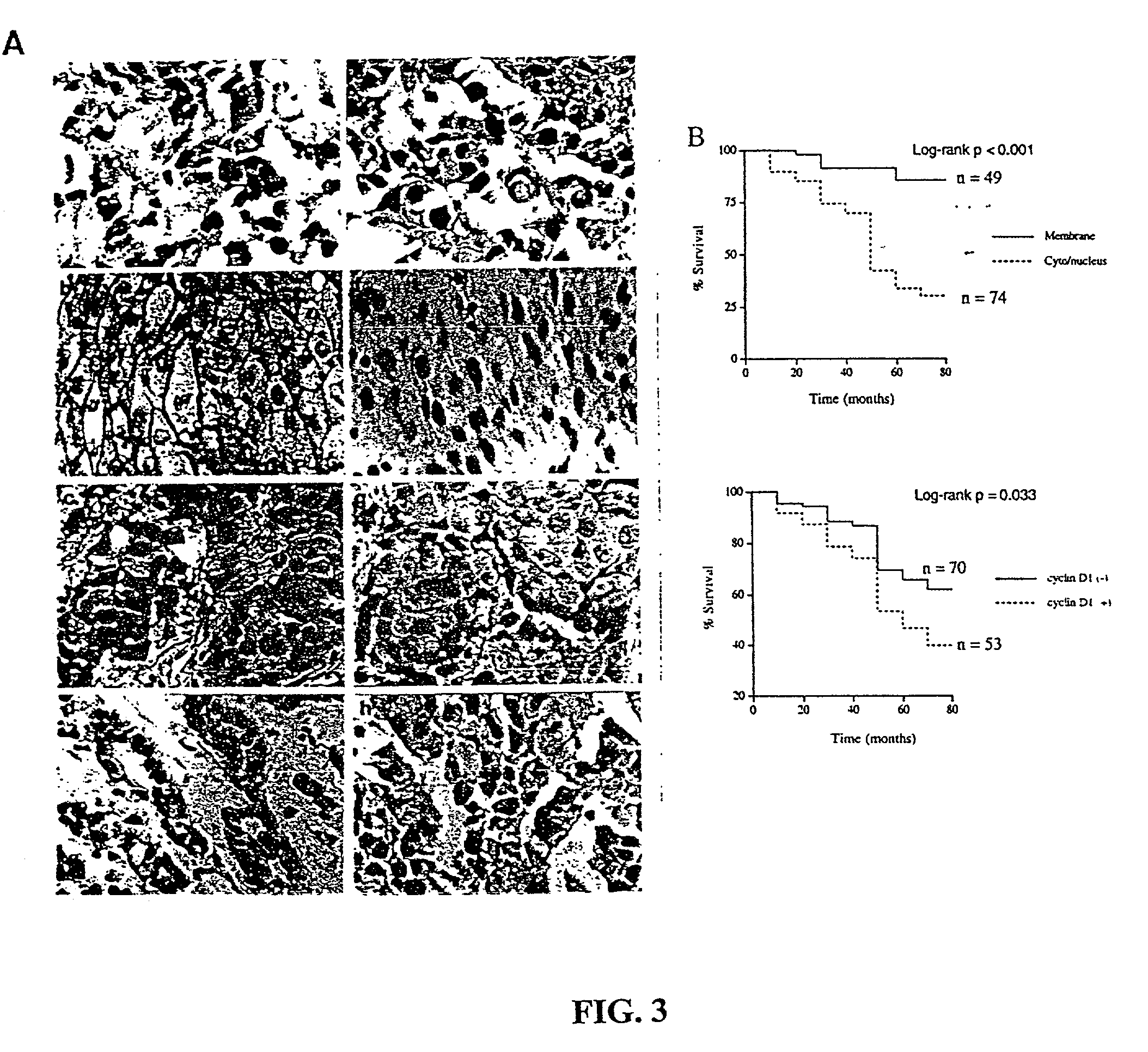Beta-catenin is a strong and independent prognostic factor for cancer
- Summary
- Abstract
- Description
- Claims
- Application Information
AI Technical Summary
Benefits of technology
Problems solved by technology
Method used
Image
Examples
example 1
Cell Lines and Transfections
[0223] All cell lines were obtained from the American Type Culture
[0224] Collection and maintained in DMEM / F-12 (HyClone) with 10% (vol / vol) fetal bovine serum. Transient transfections were performed by using DC-Chol liposome provided by Leaf Huang, University of Pittsburgh. In brief, exponentially growing 293 cells and MCF7 cells were cultured in six-well plates and transfected with 0.4 .mu.g of reporter, 0.2 .mu.g of pCMVGa1 control, and 1 .mu.g of effector constructs or different amounts of .beta.-catenin expression vectors in the dose-dependent experiment or transfected with the control vector pcDNA3 (Invitrogen). The .beta.-catenin, GSK-3 (Pap, et al., 1998), and dnTcf4 effector plasmids have been described (Korinek et al., 1997). Luciferase assays were performed 40 h after transfection and normalized through .beta.-galactosidase activity. Each assay was performed triplicate. The .beta.-catenin stable cell lines were generated by transfecting the 293...
example 2
Western Blot Analysis
[0226] Cell lysates were separated by SDS / PAGE and transferred onto the nitrocellulose membrane. Protein levels were determined by using antibodies that recognized myc-tagged .beta.-catenin, cyclin D1 (purchased from NeoMarkers, Union City, Calif.), and .alpha.-actin (purchased from Oncogene Science).
example 3
Gel Mobility Shift Assays
[0227] The gel-shift assays for .beta.-catenin / Tcf4 were performed as described (Korinek et al., 1997). Extracts were prepared from intact nuclei of different breast cancer cell lines. The probe was a double-stranded 15-nt oligomer, (CCCTTTGATCTTACC; SEQ ID NO: 2); the control oligomer was CCCTTTGGCCTTACC (SEQ ID NO: 3). The binding reaction contained 5 .mu.g of nuclear protein, 10 ng of radiolabeled probe, and 1 .mu.g of poly(dIdC) in 25 .mu.l of binding buffer (60 mM KCI / 1 mM EDTA / 1 mM DTT / 10% glycerol). Samples were incubated on ice for 30 min, and the probes were added and incubated further at room temperature for 30 min. The .beta.-catenin / Tcf4 bands were confirmed by the competition assays with the excess of cold wild-type or control oligomers and by comparing the complexes derived from the nuclear extract of 293 cells and its .beta.-catenin transfectants.
PUM
| Property | Measurement | Unit |
|---|---|---|
| Fraction | aaaaa | aaaaa |
| Fraction | aaaaa | aaaaa |
| Fraction | aaaaa | aaaaa |
Abstract
Description
Claims
Application Information
 Login to View More
Login to View More - R&D
- Intellectual Property
- Life Sciences
- Materials
- Tech Scout
- Unparalleled Data Quality
- Higher Quality Content
- 60% Fewer Hallucinations
Browse by: Latest US Patents, China's latest patents, Technical Efficacy Thesaurus, Application Domain, Technology Topic, Popular Technical Reports.
© 2025 PatSnap. All rights reserved.Legal|Privacy policy|Modern Slavery Act Transparency Statement|Sitemap|About US| Contact US: help@patsnap.com



